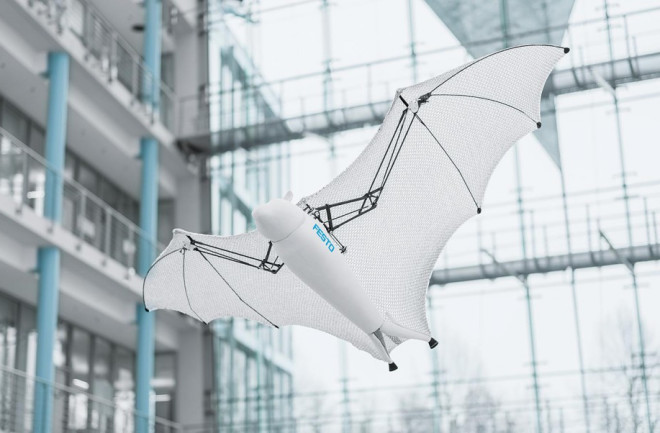Let's just hope this robot flying fox be used for good ... (Credit: Festo) Flying foxes — also known as fruit bats — have an elastic membrane that stretches from their fingers (they also have thumbs) to their toes, making them incredibly aerodynamic and agile while flying. For the engineers at Festo, a German automation company, bats are the perfect specimen for bioinspired drones. The Bionic Flying Fox has a wingspan of more than 7 feet, is almost 3 feet long and weighs a little more than 1 pound, according Festo's website. For comparison, living, breathing flying foxes sport wingspans of up to 6 feet. The bionic bat's membrane, a knitted stretch fabric, comes together at about 45,000 points to create a honeycomb structure. Even if the membrane gets damaged, the semi-autonomous bot can still fly. It uses infrared cameras and machine learning for motion tracking and to make decisions. https://youtu.be/zDq4kjY19UU?t=9s We can now add flying foxes to the long list of animals that scientists have modeled robots and machines after, including bees, geckos, birds and spiders.
The Fantastic Bionic Flying Fox

Newsletter
Sign up for our email newsletter for the latest science news
More From Discover
Recommendations From Our Store
Shop Now
Stay Curious
Subscribe
To The Magazine
Save up to 40% off the cover price when you subscribe to Discover magazine.
Copyright © 2024 Kalmbach Media Co.
